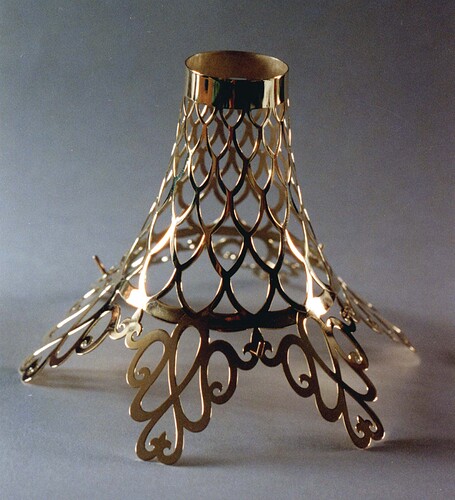Peter, how does one saw sideways? Is the entire saw held at 90
degrees to the forearm, or do you just alter the saw to have the
blade perpendicular to the frame (as can be done with a coping
saw)?
Sorry for the delay responding. I was enjoying the SNAG convention
in Philly…
As James also says in a reply, this is not complex. No modification
to the blade. Just hold the saw frame so your not cutting away from
your line of sight. Whether you hold the saw frame sideways in your
hand, or just point your whole hand to the side, or some combination,
is a matter of choice and comfort. Just saw from right to left (if
you’re right handed), rather than from front to back. You can still
adjust the exact direction and angle of the blade same as you’d
otherwise do, as needed. it just gets the frame itself, and the
blade, out of the way of your view of what’s happening. Try it.
You’ll figure out quickly enough how to make it work best for you. No
hard and fast rules here. More like discarding the traditional hard
and fast rule that you have to saw away from you.
If you want even more variety of experience, try it the way some
folks in Asia, India, Thailand, etc do. Without benefit of a nice sit
down work bench, some of those workers are sawing much closer to the
floor, on only slightly raised work surfaces. No clearance for a saw
frame under the work. So the frame can be held delicately, almost
like a pencil, with the saw blade installed upside down from the way
we usually do it, and held above the work. The saw cuts on the
downward stroke, still, but the saw frame is above the work. The
spring of the frame used this way tends to loosen tension on the
blade with each stroke, rather than the reverse, so a slightly more
gentle touch may be needed, but it works just fine for them. Sitting
cross legged on the floor with a low table/work surface, sawing
away… In this method, the work is held much below eye level, and
you’re looking down on your work. Different, but works fine for
those people doing it this way.
Bottom line? Feel free to break the rules and do whatever works best
for you. Don’t assume that conventions and the way you were taught
are always correct for all situations. They may be the best way to do
most things, for most people, most of the time. Or they may simply be
conventions used “just because”, open to individual variations and
improvements.
Peter
